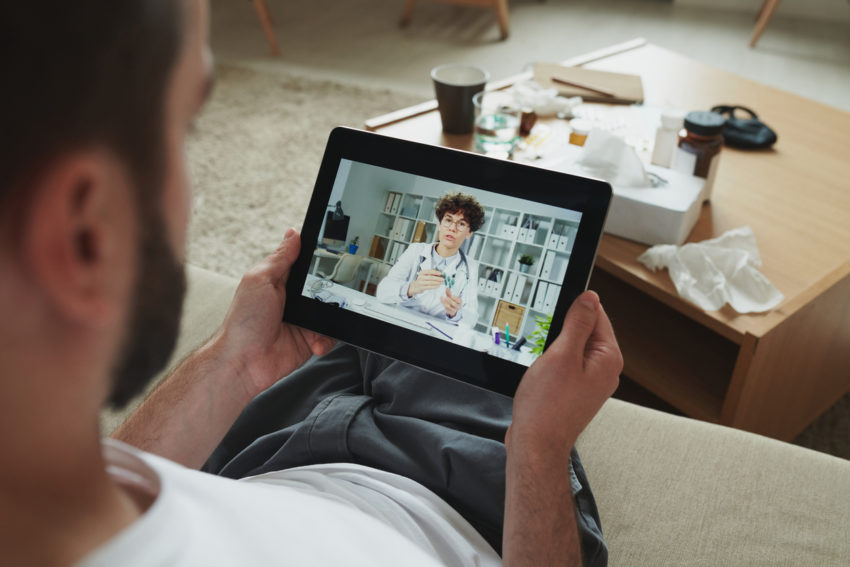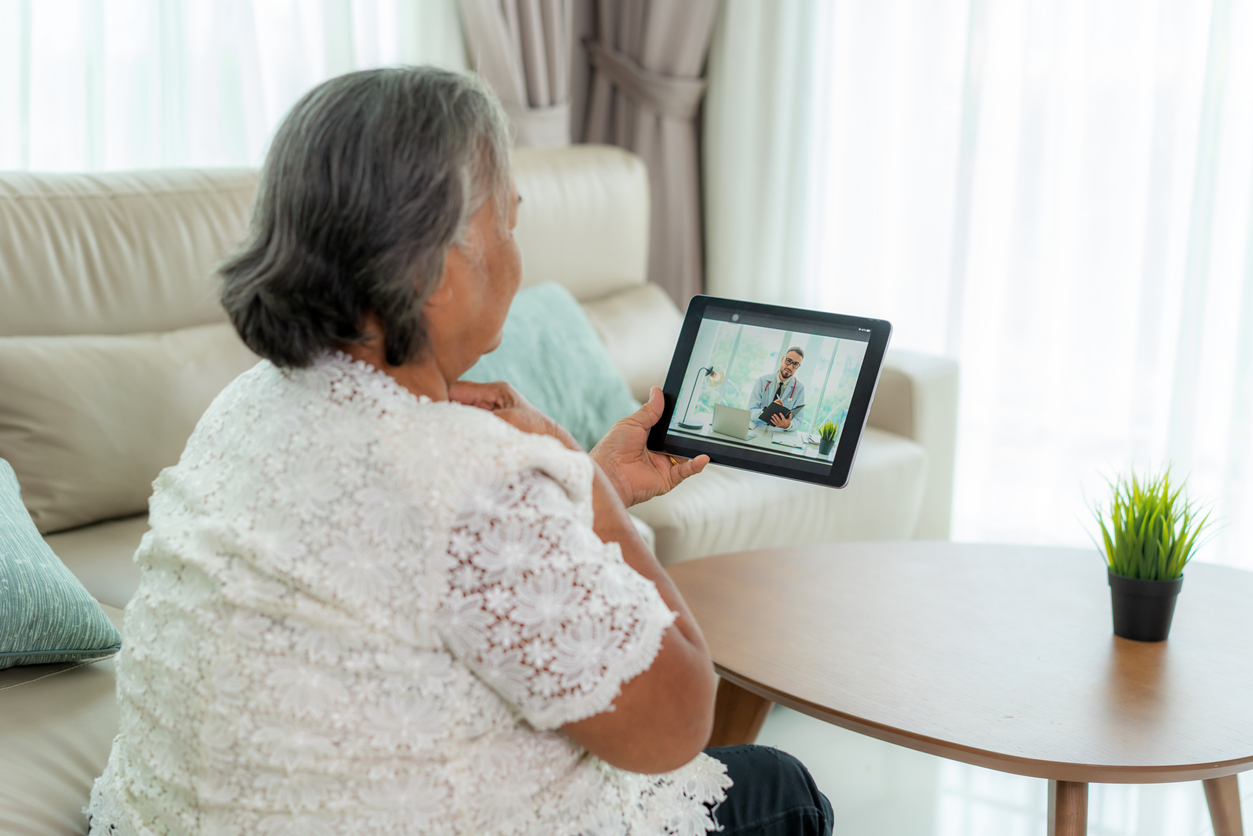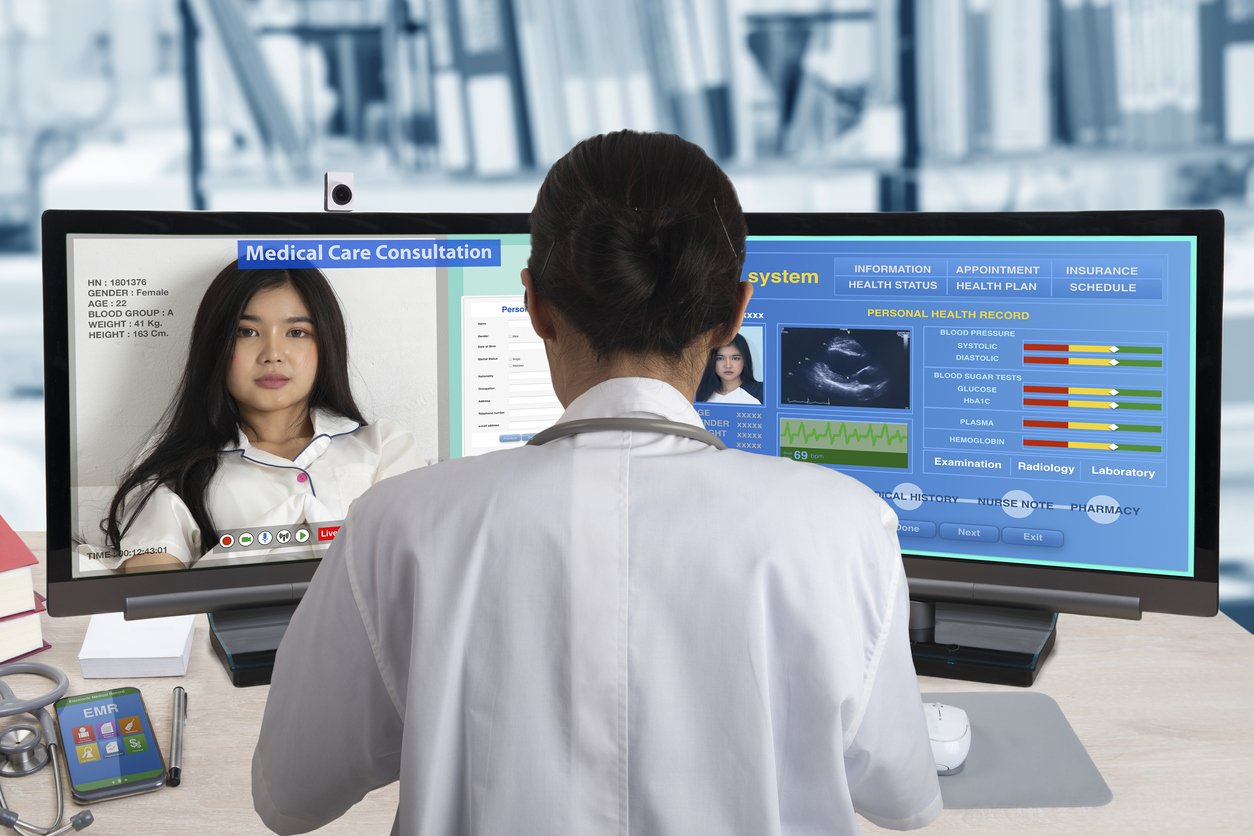
Share On Social!
Delaying medical care can cause catastrophic health and financial problems.
That’s why early in the COVID-19 pandemic, the Centers for Medicare and Medicaid Services temporarily expanded its telehealth coverage so physicians, nurse practitioners, clinical psychologists and licensed clinical social workers would be reimbursed for telehealth services. Other payers followed suit.
Unfortunately, not everyone can just hop on a telehealth video call.
Many Latinos and other vulnerable populations—older people, people experiencing domestic violence, and families with low income—face insurance, language, health literacy, digital literacy, and digital access barriers to telehealth services. Moreover, telehealth can be challenging for people with autism, intellectual and developmental disabilities, paranoia, anxiety disorders, and people with sensory and communication difficulties, according to an executive briefing from Open Minds.
Leveling up from a phone call to a video call, for example, requires internet access; a smartphone, tablet, or computer with a camera; and some sort of app, which often requires some degree of tech savvy to get through the multiple, English-only steps necessary to download.
Without addressing specific needs of vulnerable populations, the telehealth revolution may leave them behind and increase health disparities.
Disruptions in Patient Care
Efforts to prevent exposure to COVID-19 have disrupted patients’ access to primary and specialty care, diagnostics, and therapeutic procedures.
Many medical offices closed their doors to in-person visits, and converted video visits.
At one University of California at San Francisco primary care clinic, for example, visits from non-English-speaking patients dropped from 14% to 7% after the pandemic forced a switch to telehealth, according to Nicole Westman with The Verge.
Why is accessing telehealth so challenging for some?
1. Lack of Insurance
The U.S. is the only developed country in the world without a universal health-care system.
Latinos have the highest uninsured rates of any racial ethnic group in the U.S.
COVID-19 is making it worse.
61% of Latinos report they or someone in their household experienced a job or wage loss due to coronavirus─which can cause loss of health insurance, too.
An estimated 27 million workers are at risk of losing employer-sponsored health insurance and becoming uninsured following job loss, according to the Kaiser Family Foundation.
2. Lack of Primary Care Provider
Latinos are less likely to have a regular source of health care.
“People with Medicaid or high-deductible plans, for instance, are less likely to have a primary care physician; 34% of Black people and 15% of white individuals are covered by Medicaid and therefore less likely than people with employer-sponsored insurance to have a regular physician,” according to Sharon Begley with Stat News.
Beyond primary care, it’s important to also consider access to specialists and behavioral and mental health providers.
3. Limited Digital Literacy and Access
Lack of broadband internet is associated with lower participation in telehealth care.
Although more Latinos access the internet from a mobile device than whites, broadband subscription rates are roughly 46% for Latinos compared to 73% for whites. Latino smartphone users are about twice as likely as whites to have canceled or cut off service because of the expense, according to the Pew Research Center.
“Among American adults >65 years old, who constitute 18% of the American population and are most likely to need chronic disease management, only 55%–60% own a smartphone or have home broadband access,” according to four researchers who explored equity in telemedicine.
 Moreover, just as access to health insurance does not equal access to a primary care provider, access to a computer with internet does not equal access to telehealth.
Moreover, just as access to health insurance does not equal access to a primary care provider, access to a computer with internet does not equal access to telehealth.
Even with access to a computer, roughly 32 million Americans aged 16 to 65 do not have sufficient comfort or competence using it, according to a 2018 report from the US. Department of Education.
4. Language and Communication Barriers
People who speak English as a second language, people with hearing and vision trouble, and people with low English literacy skills face many communication barriers accessing telehealth care.
Language and communication barriers impact both patients and clinicians. Patients may skip or delay care or misunderstand medication instructions while clinicians drop core relationship-building elements from their interactions.
Although providing language assistance services had been a requirement since the 1960s, not all hospitals offer such services.
In 2014, researchers found that more than 30% of hospitals were not providing language services.
Instead, they often rely on nonprofessionals, which can violate confidentiality and increase risk of medication and procedural errors, avoidable readmissions, and poor health outcomes.
“Everybody has a story about some risky situation where lack of adequate interpretive services put a patient in harm’s way,” said Melanie Wasserman of Abt Associates, a research and program implementation firm based in Cambridge, Mass, according to one source.
This is particularly problematic because approximately 24 million Americans aged 18 and over have limited English proficiency; 26 million have vision trouble; 38 million have trouble hearing; and 34 million have low English literacy skills.
Not only are public health professionals concerned about language-related errorsparticularly about inconsistent monitoring and reportingbut public health professionals are also concerned that video calls could exacerbate these errors.
With a third of hospitals not in compliance with current language laws, the shift to telehealth raises even more concerns about language-related errors.
5. Physical and Developmental Disabilities
One in four adults in the U.S. have some type of disability.
More than 8 million adults have a mobility disability with serious difficulty walking or climbing stairs, and more than 6 million Americans have a cognitive disability with serious difficulty concentrating, remembering, or making decisions.
People with disabilities are less likely to have a usual health care provider, more likely to live in poverty, and are at increased risk of having obesity, heart disease and diabetes. For example:
- People with disabilities live poverty at more than twice the rate of people without disabilities.
- 2% of adults with a disability are obese compared to 26.2% of adults without a disability.
- 5% of adults with a disability have heart disease compared to 3.8% of adults without a disability.
- 3% of adults with a disability have diabetes compared to 7.2% of adults without a disability.
Due to physical and development disabilities and related comorbidities, these populations face more barriers when attempting to adapt to disruptions in health care.
6. Systemic Social and Racial Injustices
Due to systemic social and racial injustices, Latino communities are disproportionately burdened by poorer quality schools; unsafe streets; fewer parks, grocery stores, and employment opportunities; and more corner stores. Moreover, the Latino-white pay gap has hardly changed in 20 years, from 12.3% in 2000 to 11.8% in 2018. In 2018 median Latino wages were 73.1% of white wages.
College didn’t help close the wage gap between 2000 and 2018. In fact, Latinos with a college degree earned roughly the same proportion of white wages in 2018 (82.0%) as they did in 2000 (82.8%).
These inequities lead to social and behavioral risk factors and higher rates of chronic disease. Coupled with these social inequities, poor access to healthcare make Latinos disproportionately vulnerable to disease and premature death.

However, with so many immediate social needs that threaten to impact the family, some individuals may not place importance on a video call about their individual health.
7. Perceived Discrimination
Latino and low-income patients have reported feeling like they received inferior treatment compared to white people because of their race, income, and insurance status.
Examples of discrimination include not making conversation, no making eye contact, and dismissing patient concerns, symptoms, and pain.
One study found that Latino stroke patients were less likely than white stroke patients to receive life-saving treatment.
Researchers found that 70% of Latinos who had experienced prior discrimination in a health care setting delayed seeking needed healthcare compared to 48% of Latinos who had not experience prior discrimination.
Although most providers are not explicitly racist, they operate in an inherently racist system and can overlook their own implicit biases.
We Need More Resources to Address Equity in the Telehealth Revolution
Although there are some resources to better address equity issues in the telehealth revolution, there are many gaps.
Implicit bias training can teach providers and other staff to be away of their unconscious biases.
Cultural competency training can help providers become more knowledgeable about norms and preferences to improve patient-provider relationships, and video remote interpreting can improve patient-provider communication.
Reinstating the Community Technology Centers (CTC) program through the Department of Education and temporarily funneling funds to use community health workers during COVID-19 for information technology training can help families improve digital literacy.
“Health systems can identify high-risk patients with low digital literacy and use community health workers to help them with the basics of using a computer or smartphone device,” according to David Velasquez and Ateev Mehrotra with Health Affairs. “Alternatively, hospitals can screen hospitalized patients for low digital literacy at the point of discharge and quickly orient them to the fundamentals of digital competency.”
Better monitoring and reporting of communication-related errors as well as better tools to identify and track discrimination in health care settings can point to best practices to address these issues.
Cities can address systemic racism in policies and practices by passing a resolution to declare racism a public health crisis and committing to actions to dismantle racism.
You can urge them.
“[Telehealth] strategies need to be in place for connecting with patients and caregivers who are less technologically enabled, have multiple comorbid conditions, do not have access to broadband, and/or have low health or digital health literacy,” according to the Patient Safety Network.
By The Numbers
142
Percent
Expected rise in Latino cancer cases in coming years



